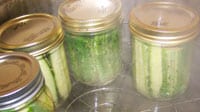 Have you seen the television commercials about A2 milk? Do you wonder, what is A2 milk? Is it better for me?
Have you seen the television commercials about A2 milk? Do you wonder, what is A2 milk? Is it better for me?
All milk contains beta casein protein which has several variants. The two most commonly found are A1 and A2. Certain breeds of dairy cattle only produce A2 beta casein proteins. In general, those breeds include Guernsey, Jersey, and Asian herds. Human milk and other animal milk also mostly A2. Holstein milk has both A1 and A2.
So what’s the big deal about A2 milk? Research is very limited, but some claims say that milk containing A1 leads to Type 1 Diabetes, coronary heart disease, and maybe, schizophrenia and autism if immune deficiencies are present. Some claim that A1 is digested differently than A2 and causes negative health effects.
Scientifically, the evidence is very limited. Only rat studies have shown any benefit of consuming A2 milk. Human clinical studies have not shown evidence to match the rat studies. Therefore, the information to show benefits of A2 milk are anecdotal. Also, those with lactose intolerance or milk allergies will not benefit from A2 milk.
To learn more about A2 milk, see:
http://cdrf.org/2017/02/09/a2-milk-facts/





